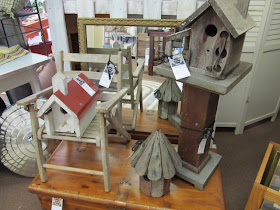Feedsacks!
This is an informational page only.
The feedsack story starts in the early 1800's, when goods such as food staples, grain, seed, and animal feed were packed for transportation and storage in tins, boxes, and wooden barrels. This was not an ideal method of storage as tin would rust and the hand made boxes and barrels leaked and were damaged easily. They were bulky, heavy and difficult to transport. Manufacturers were anxious to find another method, but didn’t consider the cloth bags of homespun linen (which was then considered a junk fabric) used by the farmer to store goods for use in the home because the hand sewn seams wouldn’t hold up in heavy use. This changed in 1846 with the invention of the "stitching machine," which made it possible to sew double locking seams strong enough to hold the contents of a bag.
Feedbacks were initially made of heavy canvas, and were used to obtain flour, sugar, meal, grain, salt and feed from the mills. They were reusable, with the farmer bringing an empty sack stamped with his mark or brand to the mill to be filled. This changed when the North East mills began weaving inexpensive cotton fabric in the late 1800's. Feedsacks (or feedbags) were initially printed on plain white cloth and in sizes that corresponded to barrel sizes. For example, a one barrel bag held 196 pounds of flour. A 1/8 barrel bag only held 24 pounds. The brand name of the flour was simply printed on the side of the bag.
The thrifty farm wife quickly discovered that this cotton bag was a great source of utilitarian fabric to be used for dish cloths, diapers, nightgowns and other household uses. Manufacturers decided to take advantage of this and started offering sacks in various prints and solid colors as a marketing ploy to create loyalty. It would take three identical sacks to make a dress, for example, and the farmer just might be induced to buy more that way.
It was not hard for the farmer to purchase his goods in feedsacks. The flour industry consumed the largest share of the feedsack market with more than 42 percent. Sugar was next with 17 percent followed by feed, seeds, rice, and fertilizer. These feedsacks came in different sizes, and the quality of the cloth varied with the item it carried. Sugar sacks, for example, were much finer in weave. By 1914, sacks came in 10, 6, 4, 3, 2 and 1 pound sizes, although these sizes varied by manufacturer. President Roosevelt standardized sizes in 1937. A 50 pound feedsack measured 34 x 38 inches. A 100 pound sack measured 39 x 46.
Cheater grandmother's flower garden quilt , plus a feedsack in the same print and coloring but a more coarse weave. Click on the picture thumbnail to see this up close. | | |
Magazines and pattern companies began to take notice of feedsack popularity and published patterns to take advantage of the feedsack prints. Matching fabric and even matching wrapping paper was available, too. (Above) Directions were given for using the strings from feedsacks in knitting and crocheting. A 1942 estimate showed that three million women and children of all income levels were wearing print feedbag garments.
Feedsacks were used to make:
- Clothes
- Toys
- Underwear
- Pillowcases
- Diapers
- Laundry bags
- Curtains
- Table cloths
- Towels, dish cloths
 Gone with the wind feedsack. Click on the thumbnail to see it up close Gone with the wind feedsack. Click on the thumbnail to see it up close |  | | |
Manufacturers began to compete with each other to provide attractive, useful bags. Some bags came ready for sewing with pre printed patterns for dolls or aprons. Others were specifically printed for pillow cases or curtains. Some sacks were printed as a series such as the 1935 Sea Island sugar doll series.
Many sacks had themes. Some of the more collectible sacks now are those with Walt Disney themes (Davy Crockett, Cinderella, Alice in Wonderland, Donald Duck, Mickey Mouse, Goofy), movie themes (Gone with the wind, above), Comic book themes (Buck Rogers) or nursery rhyme themes (BoPeep, Humpty Dumpty)
By1941 there were 31 textile mills that manufactured bag goods. Bemis Brothers (TN), Fulton Bag & Cotton Mills and Cottons Mills of Atlanta had their own textile mills. Percy Kent of Buffalo NY made the famous WWII feedsacks known as Kent’s Cloth of the United Nations which featured wartime symbols. (Below)
WWII feedsack. Click on the thumbnail to see it up close. | | | |
After WWII, technological innovations provided more sanitary and effective packaging made of heavy paper and plastic containers. It was cost effective, too. A cotton bag cost 32 cents to make, as opposed to 10 cents for the paper bag. By 1948 this new industry cornered more than half of the bag market and the cloth bag fell out of use. But not entirely! Some Amish and Mennonite communities demand, and receive, their goods in feedsacks.
The pictures on this page are examples of feedsacks. They are not for sale.
. Doing your laundry has come much further since then and we have many tools at our disposal such as a
. There are also many
available that teach us how to clean our clothes.



















